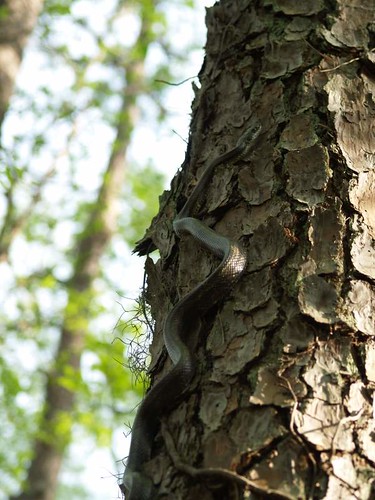... that all men are created equal, that they are endowed by their Creator with certain unalienable Rights, ... Happy Independence Day, everyone, and we look forward to a day when the law of the land actually reflects the sentiments expressed in this line from the preamble. (I know, I am a day early, but per rules adopted by the
Amalgamated Brotherhood of Bloggers, Tweeters, and Internet Diarists, Local 416, I get tomorrow off.)
We are, unsurprisingly, still at the
Choo-Choo Express Garage near Chattanooga, Tennessee. When last I posted, I reported that we might be putting the engine back in place Friday and it was questionable whether we'd be here over the weekend; I can now report that there is no question that we are still here, and what is in question now is whether we will also be here
next weekend as well.
By Thursday afternoon it was clear that the alternator shop would not be done with the alternator and starter until sometime Friday, which meant for sure we'd be here through Saturday. As it turns out, I was able to pick up the items from the alternator shop just as they were closing Friday afternoon, with our powertrain, mostly assembled and ready to go, still sitting forlornly in the shop.
 End plate removed, and all cleaned up.
End plate removed, and all cleaned up.In the meantime, we discovered that a temperature sender on the side of the transmission retarder was damaged during the removal, and we need to track one of those down. That observation led to a side discussion about temperatures and overheating on Friday morning, and Joel decided to take a look at the radiator. I'm not sure why it did not occur to us to have a better look at it right after we pulled the engine, but it didn't.
Not terribly surprisingly, the radiator was in lousy shape. Lots of fin rot towards the very bottom, where moisture and debris collect, and when we peered in to the tanks, we could see lots of stalagmites, a bad sign. After fifteen minutes of head-scratching and consultation, we told Joel to go ahead and remove it. Once it was out (a two-hour project, even with the engine out), a bunch of coolant came out of it, which must have been trapped by some number of clogged tubes, affirming our decision.
 Corroded fins.
Corroded fins.We did not come to this shop to have our perennially marginal cooling dealt with. But the radiator on
Odyssey, like many things crammed into the engine bay during the Detroit repower back in 1989, is extremely difficult to get to. I am betting that, if push came to shove, it could be removed with the engine still in place. That said, it was undoubtedly installed with the engine out, and it was certainly much easier to get to it that way. I'm sure the radiator, even at 22 years old, could go another few years and thousands of miles, but we had an unprecedented (and hopefully not to be repeated) opportunity to do it with that pesky engine out of the way.
 Radiator out; what a chore.
Radiator out; what a chore.So, at this writing, the radiator, too, is lying on the shop floor. I spent most of Friday on the Internet and the telephone trying to find a shop to re-core it this week. As it stands now, I have a commitment from a shop in Mayfield, Kentucky, about a five hour drive, to start on Tuesday, and I have a rental car booked with Hertz for Tuesday morning so I can get it there. With luck they could have it done Thursday and I could have it back here in time to get us all put back together Friday.
I have a lead on exactly one other shop that might be able to do the work, in Gadsden, Alabama, which is much closer. So I will be calling them first thing Tuesday morning, before I pick up the rental car. We'll see how it goes. No one can turn this around in a day, as our odd core size of 24" by 54" is not generally stocked.
That, at least, gives us all week to find the replacement sensor for the transmission, get the alternator and starter back on, and clean up the engine and generator bays. I will consult with Joel on Tuesday or Wednesday about whether it makes sense to stuff the engine back in so we can at least test it, and put the radiator in afterward. (Our engine, being electronically controlled, can not be "bench tested" outside of the bus without a fancy electronic test rig that Choo-Choo does not have.) That would also let us get the generator back into position, and it may be worth the extra hassle in replacing the radiator to have all this done before Friday.
I did finish the repairs on the generator, and my hokey copper-tube-with-JB-Weld fix for the alternator pivot bolt seems to have gotten the alternator back to mostly in plane with the other two pulleys.

The finger-guard with its captive nuts now serves its purpose in making adjustment a one-wrench affair, as opposed to a wrench on each end without it (and a third hand to put tension on the belt).

I also got the remote dipstick fully secured into position.
 New dipstick tube. I used to have to reach around the engine to pull the tiny dipstick from the hole in the lower block.Yesterday's project
New dipstick tube. I used to have to reach around the engine to pull the tiny dipstick from the hole in the lower block.Yesterday's project was dealing with the battery switch. You may remember that we tracked many of our recent battery problems back to a failing switch, which is bypassed at the moment. I
posted for help in finding a replacement on the bus board and a very gracious fellow bus enthusiast offered to send me a used one he had lying around for free. Had we known at the time that we would be here at Choo-Choo, where they have two used ones sitting on the shelf, we might have simply had them provide us one.
Take-outs are always a gamble, and while I am certain that the gentleman who sent this to me had no way to know, the switch was in pretty bad shape. As soon as I picked it up I could feel excess play in the handle, something was rattling inside, and I could see the handle tension springs were broken. I was not comfortable installing it without first checking out the innards and fixing what I could, and I wanted to do it while we were still here, so I could have one of the ones on the shelf here if it did not work out. (Those, too, looked to be a little rough around the edges.)
Of course, the
Underwriters Safety Device Co. of Chicago, who made these switches, had no interest in anyone ever opening one up ("no user-serviceable parts inside," as they say); after all, their interest is in selling you a new one. Ironically, they now appear to be out of business. In any case, the enclosure is secured with four sturdy rivets. The rivets are recessed on both ends, quite deeply on the peen side and just a smidge on the head side.
As anyone who has ever had to drill out a bunch of rivets can tell you, metal rivets in Bakelite will spin uselessly once the drill bit bites into the metal. I had to painstakingly machine a screwdriver slot into the head of each rivet using my Dremel, then hold the rivet in place with a screwdriver while Louise drilled it out from the other side. Eventually I managed to get the case open to reveal the guts. This switch was likely mounted in a dirty battery bay, and plenty of dirt had ingressed into the casing and embedded itself in the grease.
 It turns out
It turns out that the switch consists mainly of a bow-tie shaped wiper that rotates into place on a pair of trapezoidal contacts. Spring steel clamps above the contacts hold the wiper firmly against them -- once it is rotated into position. After I got all the old grease and grime cleaned out, two problems immediately became apparent.
The first and most obvious is that the switch was, apparently, routinely operated under load, a real no-no with this type of disconnect switch. The result is that some of the contact area on one of the trapezoidal pads is literally melted away; there's even a bulbous protrusion of melted brass sticking out sideways from the pad. Unfortunately, this creates a gap under the wiper that significantly reduces the amount of contact area, making the switch marginal for its intended load.
 Melted area on contact pad, just under the right edge of the spring clip. Making matters worse
Melted area on contact pad, just under the right edge of the spring clip. Making matters worse is the other, less obvious problem. When the handle is mated to the operating key, it becomes clear that the switch has been operated for hundreds if not thousands of cycles, and the brass key has been worn down from a clean rectangle into an oblong, rounded on all four corners. Ultimately, this means that the lever hits its travel stop long before the bow-tie wiper is fully into position on the pads. These combined problems reduce the contact area to half of the original design.
 Rounded-off key. Note the slice of wiper still protruding from under the clip, to the left of my thumb. This was as far as the switch would operate before hitting the stop.
Rounded-off key. Note the slice of wiper still protruding from under the clip, to the left of my thumb. This was as far as the switch would operate before hitting the stop.This switch will definitely not be the solution for us long-term. I am hoping it will work well enough and long enough to get the old switch out, open it up, and see if the components therein are in any better shape. Perhaps one good switch can be made from parts of both the bad ones. To this end, I did some surgery.
First, I cleaned up the wiper and mating pads with a combination of sandpaper and files to get clean, smooth, and complete contact where possible. I used the Dremel to grind off some of the melted brass and smooth it out to reduce operational interference and arcing.
I couldn't do much about the rounded key, but I did grind off part of the lever handle where it hits the stop. This gives the lever another few degrees of travel in the "on" direction and moves the wiper that much further into contact with the pads.
 Hard to see, but the bottom left of this lever has been ground away to provide more travel.
Hard to see, but the bottom left of this lever has been ground away to provide more travel.The tension springs were a lost cause. One is now so short as to be useless, so I moved that to the "on" side where the internal spring steel holds the wiper anyway. The other was just long enough to bend to provide a bit of tension in the "off" position; I also replaced the coil spring that holds them in place. All three of these items are underneath of, and kept in place by, the manufacturer's nameplate, which is fastened by, you guessed it, rivets.
 What's left of the tensioning springs.
What's left of the tensioning springs.I lubricated the mechanism with some dielectric grease and put the whole thing back together with bolts, nuts, and washers. I estimate I am getting 80% or so of the design contact area, which should be plenty for our maximum of 400 amps through the switch (the switches are designed for starting current, perhaps twice that amount). I'll probably need to disconnect the batteries one more time while we are here, for some additional welding, and that will be a great time to swap this in for our bad one.
We've now been here so long that I had to dump the tanks today. Not actually being able to move the bus, I had to stretch the macerator hose out to the wash bay where the dump is located. It fit with just inches to spare, and seldom have I been more thankful that we have a macerator pump. We made an effort to see the local fireworks display from our roof tonight, but the view was blocked by trees. It was just too stinking hot to try to actually go anywhere for them, but tomorrow is supposed to be a few degrees cooler. Now that project mania has slowed down a bit, I am going to try to clean up some of the mess downstairs, to be ready to start putting things back together.








![eneloop [FRONTPAGE + EXPLORED #1]](http://farm5.static.flickr.com/4127/5071486857_932f645e5d_m.jpg)

























